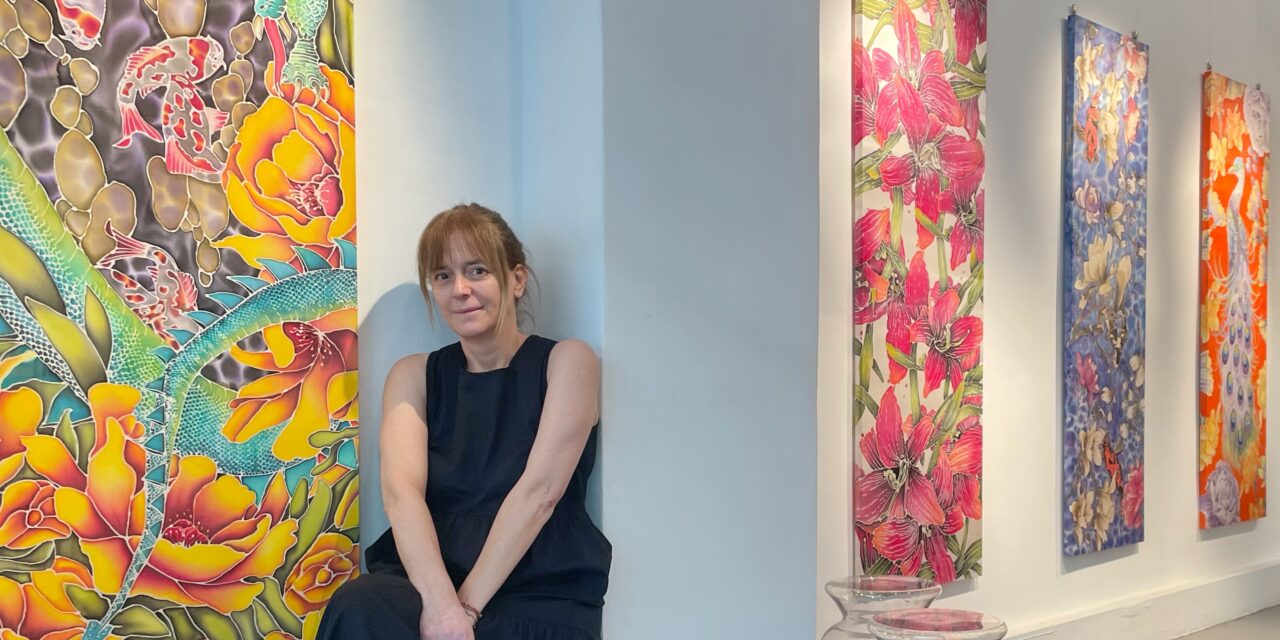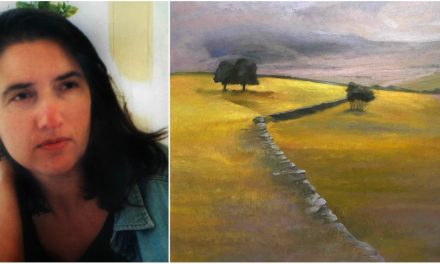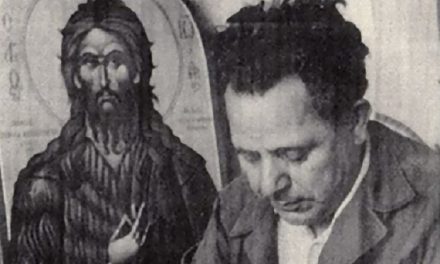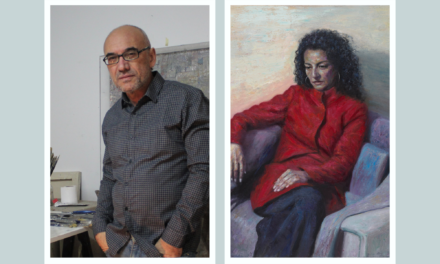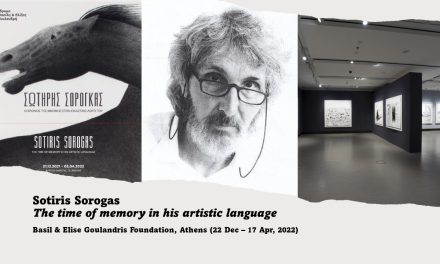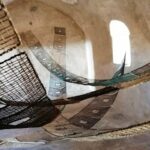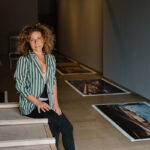For more than three decades, Marina Psalti has captivated her audience with outstanding performances both on stage and on television. In that respect, her exhibition, More than Silk, at Genesis Gallery, comes as a wonderful surprise as it eloquently reveals her remarkable talent in painting.
In a series of large-scale works, Marina Psalti paints on silk using the batik technique. Bringing together, enchanting Sino-Japanese motives (exotic flowers, majestic birds, golden dragons and colorful butterflies) as well as Italian baroque and Flemish Renaissance elements she introduces a personal narrative bearing an impressive aesthetic impact. Through the skillful use of vibrant colors and meticulous attention to detail, Marina Psalti creates a heavenly realm of exquisite elegance, tranquility and harmony.
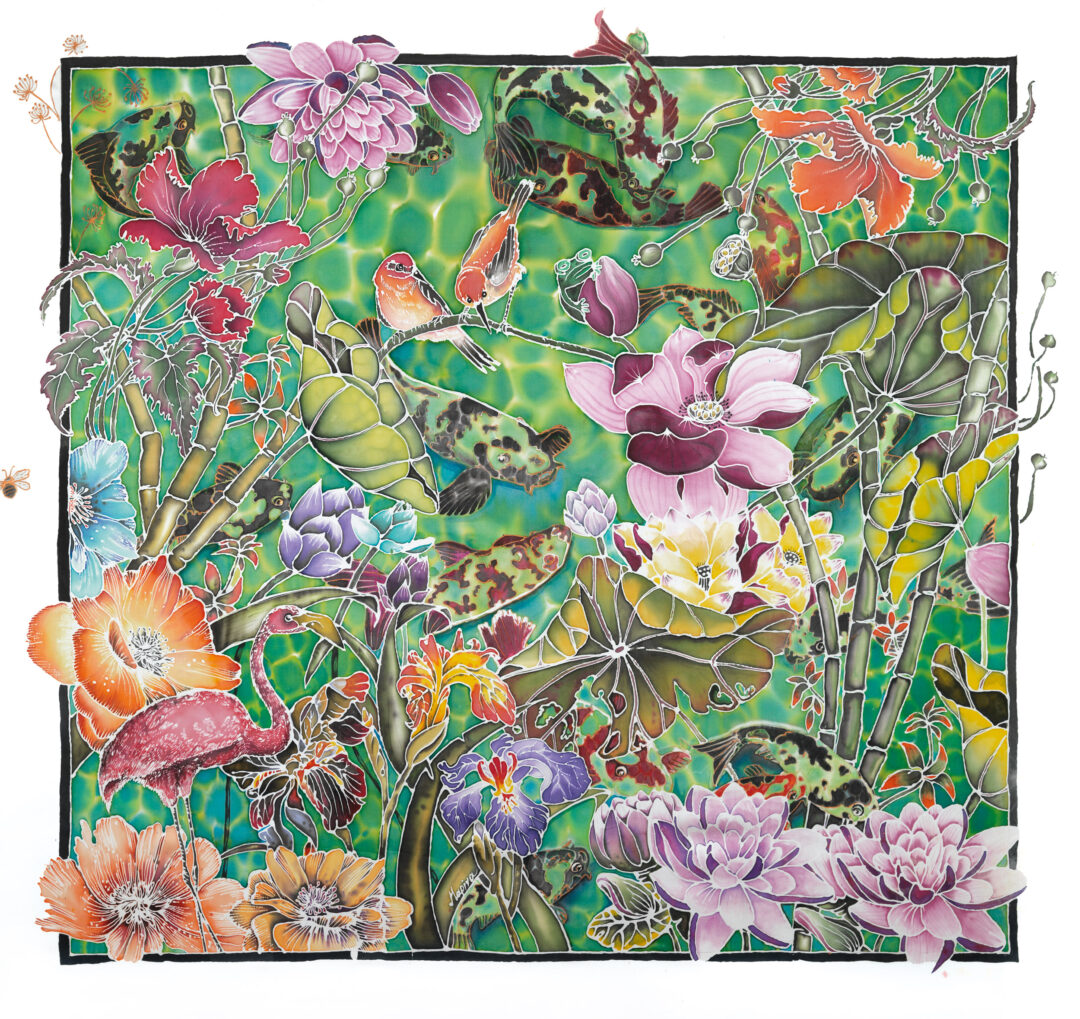
Marina Psalti was born in Athens. She studied painting at the Athens School of Fine Arts (1982-1987) under Mytaras and Tetsis, scenic design and costume design under Vassilis Vassiliadis and Art History under M. Lambraki – Plaka. She also studied acting at the Drama School of Athens (1989-1991) under professors Eleni Hatziargyris, Titika Nikiforaki, Eleni Menedaki, G. Theodosiadis. She has written a children’s book and has illustrated 4 children’s books.
Marina Psalti talks to Greek News Agenda* about expanding boundaries and the healing potential of art.
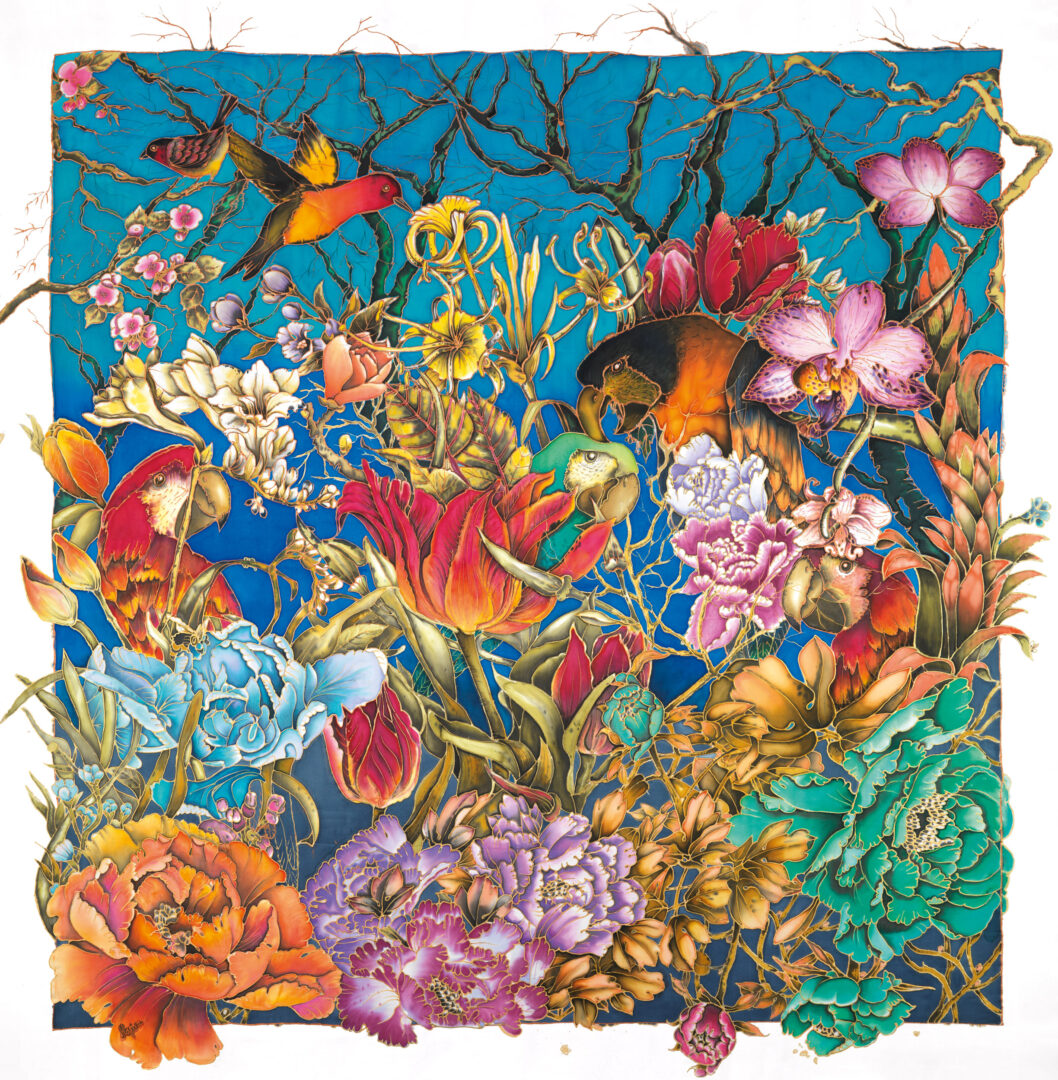
Your exhibition More than Silk gives us the opportunity to find out that, apart from a much-loved actress, you are also a very talented visual artist. What has been your relationship with painting over the years?
Painting existed in my life long before I even learned to write. Ever since I remember myself, I have been painting; all my life, until my studies at drama school. Later on, painting served as a refuge, alongside acting; when I wasn’t working in the theater when I was taking a break from acting, it played a leading role in my life. Painting and acting, have always been present in my life in a complementary way.
You choose a very demanding technique, batik on silk. What are the steps of this process and what are its characteristics that appeal to you the most, as an expressive medium?
Abroad, anything painted or dyed on cloth is called a batik. In Greece, batik has to do with dyeing and impregnating the fabric with color. My way of working has to do with pure painting. Silk is attached to a stretcher and then painted. There are many complex steps in this process. Another tricky aspect is that a mistake on the silk is not possible to be corrected. This essentially means that great concentration and precision are required. My interest in painting on silk stemmed from my love of Japanese painting. It was something I had been interested in for years and wanted to study it in depth.
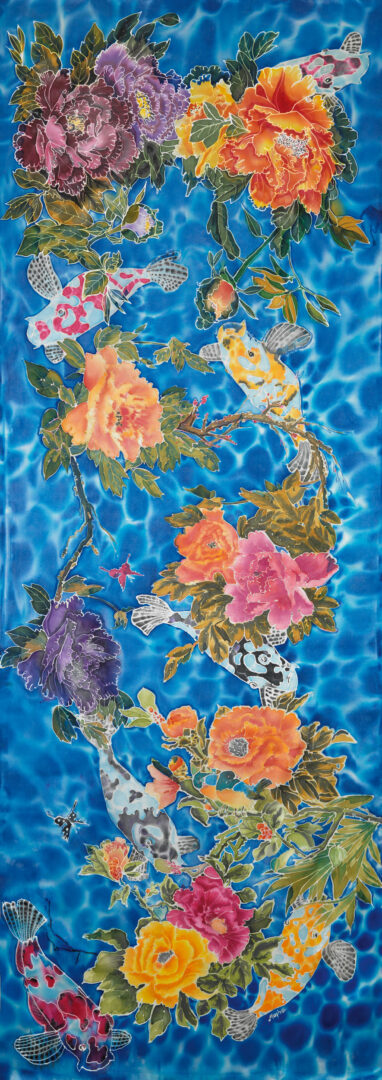
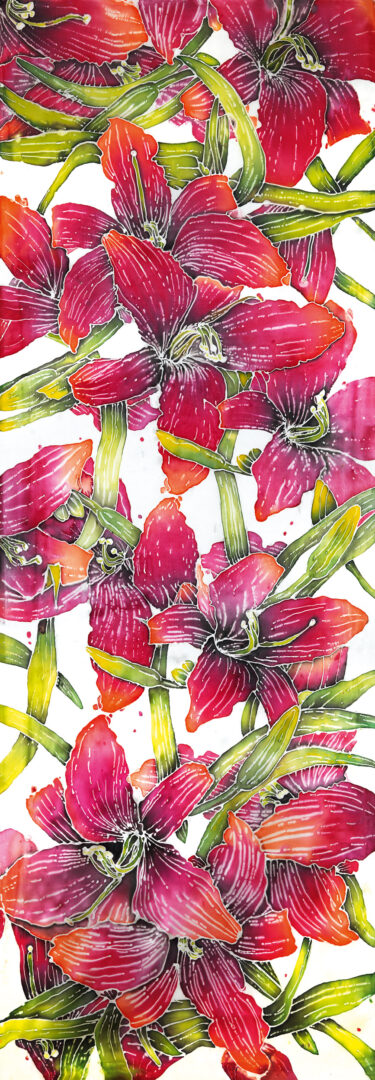
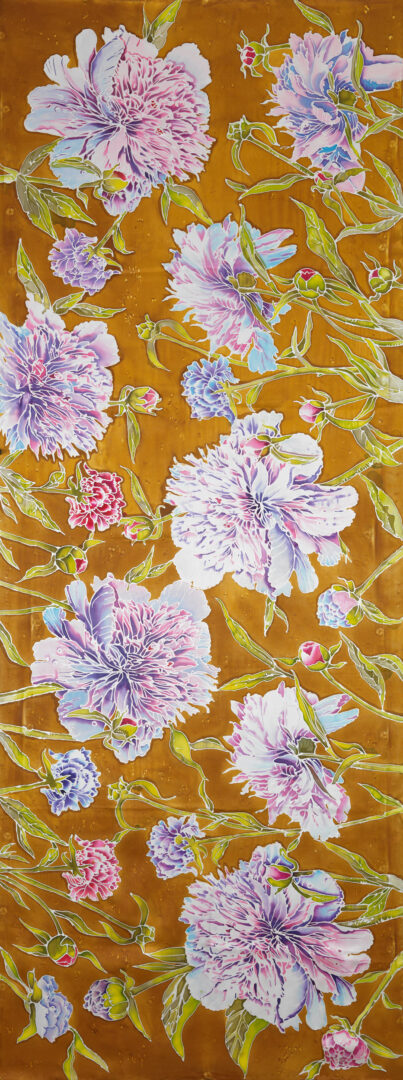
We do not often see exotic and Sino-Japanese motifs in Greece. What was it that inspired you to them?
It all started when I became seriously ill with pneumonia a few years ago. That was a great ordeal for me but at the same time, it gave me plenty of time to begin studying the potential of silk. After considerable experimentation, I reached this point of artistic expression.
Your career in theatre is truly exemplary. Now you are revealing another of your talents. What is it that each has offered you on a personal level? Would you agree that art is redemptive, and liberating at difficult times?
As I mentioned above, painting and acting functioned in parallel and complementarily. I don’t know exactly why this happened. Certainly, a very deep need must have dictated it. I ‘d rather not elaborate on this, after all, I like to keep secrets…
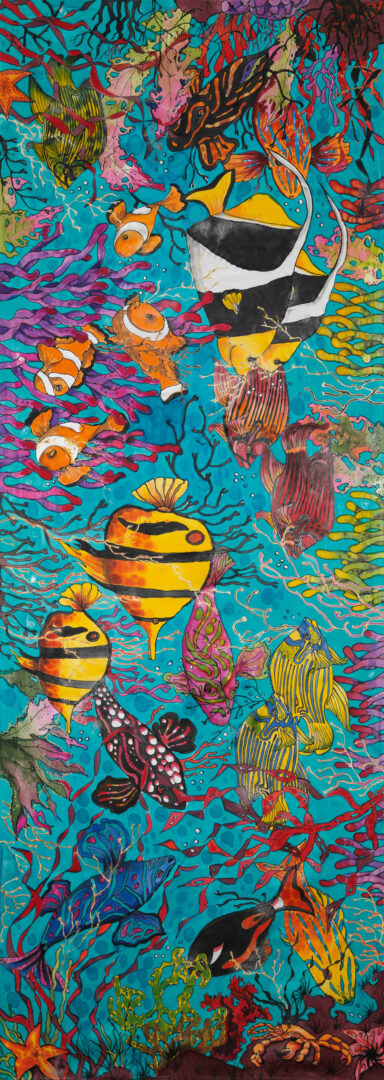

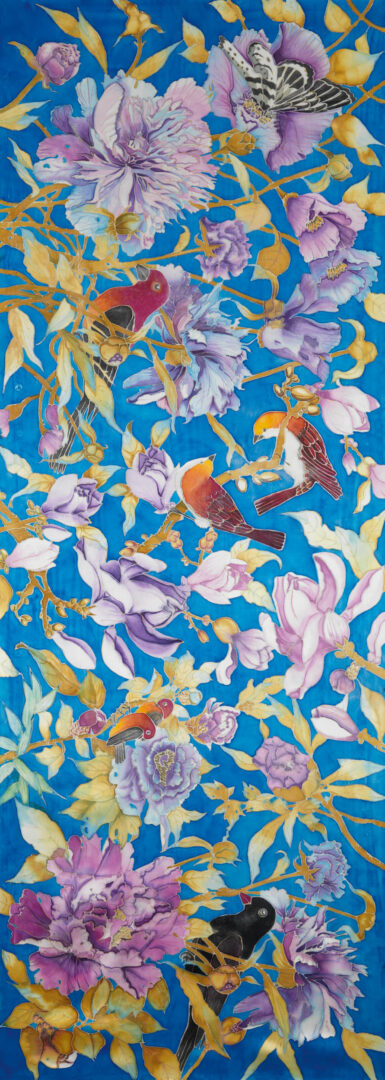
You have had great teachers both at the Athens School of Fine Arts and the Athens Drama School. To what extent do you think they have influenced your career?
I remember them all with nostalgia, deep appreciation and love. I would say that Tetsis defined me on many levels. There was a special bond between us. The imprint he left on my soul is indelible. He was first a teacher of life and then of painting. He honored me with his love and friendship and was always an inspiration to me. My memories of Tetsis weigh on me but in a beneficial way.
Apparently, you have a lot more to offer to the art, on way or another. What do you think is really important in art and in life?
I don’t know if I have or what I have to offer. What I do know for a fact is my need to communicate with people. It’s all about banishing my loneliness. A loneliness I’ve felt since I was a child. Besides, I also feel the need to express myself and this is a very powerful motive. What matters to me in life and art is being respectful to the existence, any form of existence and being generous to others without thinking too much about it.
*Interview by Dora Trogadi

